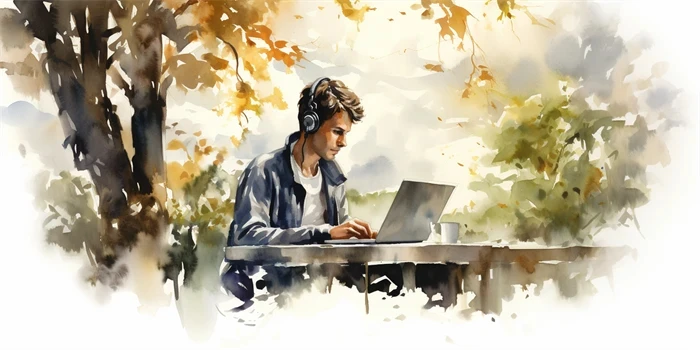Artificial Intelligence (AI) has revolutionized various fields, and the world of art is no exception. AI-generated artwork has gained immense popularity in recent years, with its unique blend of creativity and technology. But how exactly does AI create art? In this article, we aim to demystify the process behind AI-generated artwork and explore the fascinating aspects of this emerging art form.

1. Understanding Generative Adversarial Networks (GANs)
At the heart of AI-generated art lies a technology known as Generative Adversarial Networks (GANs). GANs consist of two main components: a generator and a discriminator. The generator creates images or artwork based on random noise or an existing dataset, while the discriminator’s role is to distinguish between AI-generated and human-created art. The interplay between these two components during training results in the creation of unique and intriguing artwork.
2. The Role of Machine Learning Algorithms
Machine learning algorithms play a crucial role in AI-generated art. By analyzing vast amounts of data, these algorithms learn to recognize patterns, styles, and features that make a particular artwork visually appealing. This allows AI systems to generate new and original pieces of art based on the learned patterns and characteristics. The ability to learn and adapt from vast datasets also enables AI artists to mimic various artistic styles and techniques.
3. Enhancing Creativity With Style Transfer
AI art is not limited to the creation of original pieces based on existing artistic styles. With the help of neural networks and machine learning, AI systems can apply style transfer techniques to existing images or artwork. By extracting the style from one image and applying it to another, AI can create stunning and unique artistic compositions. Popular style transfer algorithms include Neural Style Transfer and CycleGAN, which have been used to create incredible fusion artwork by blending different artistic styles.
4. Exploring Variational Autoencoders (VAEs)
Variational Autoencoders (VAEs) are another important tool in the AI art world. VAEs can learn the underlying latent space of a dataset, capturing the essence of its features. This latent space can then be manipulated to generate new and diverse artworks. Artists and creators can experiment with different parameters within the latent space to create variations in style, color, and structure, resulting in intriguing and novel visual compositions.
5. Handling Text and Image Synthesis
AI-generated art is not limited to visual masterpieces; it can also incorporate text. Through the use of Natural Language Processing (NLP) algorithms, AI systems can generate textual descriptions or captions for artworks. Moreover, AI can also generate images based on textual prompts, allowing artists to create artwork based on written ideas or concepts. This fusion of text and image synthesis opens up new avenues for creative expression and collaboration between AI and human artists.
6. The Ethics and Attribution of AI Art
As AI-generated art becomes more prevalent, questions regarding authorship and attribution arise. Should the AI system or its creator be credited as the artist? This ethical quandary is yet to be resolved fully. However, many AI artists choose to credit both the technology and the human creator, acknowledging the role of AI in the artistic process. Ensuring clear attribution and ethical use of AI in art is an ongoing discussion within the artistic community.
7. The Future of AI Art
As AI technology continues to advance, the future of AI art looks incredibly promising. AI systems are becoming more sophisticated, capable of creating art that is indistinguishable from human creations in some cases. The ability to mimic artistic styles, generate original compositions, and collaborate with human artists opens up limitless possibilities for the future of AI-generated artwork.
FAQs:
Q: Can AI-generated art ever surpass human creativity?
A: While AI can create impressive and visually stunning art, it is always inspired by human creativity. AI should be seen as a tool to augment and enhance human artistic expressions rather than replace them.
Q: How do artists use AI in their creative process?
A: Artists often use AI as a source of inspiration, experimentation, and exploration. AI-generated art can help artists push the boundaries of their creativity and discover new artistic possibilities.
Q: Is AI-generated art considered “authentic”?
A: Authenticity is subjective in the art world. While AI art is created by machines, it carries the unique imprint of the individual or team that trained and guided the AI system, making it a distinctive form of artistic expression.
References:
1. Humphreys, S. (2019). AI Generated Art. In The Oxford Handbook of Digital Technology and Society (pp. 269-285). Oxford University Press.
2. Elgammal, A., Liu, B., Elhoseiny, M., & Mazzone, M. (2017). CAN: Creative Adversarial Networks, Generating?Art?by Learning About Styles and Deviating from Style Norms. arXiv preprint arXiv:1706.07068.
3. Gatys, L. A., Ecker, A. S., & Bethge, M. (2016). Image Style Transfer Using Convolutional Neural Networks. In Proceedings of the IEEE Conference on Computer Vision and Pattern Recognition (pp. 2414-2423).


